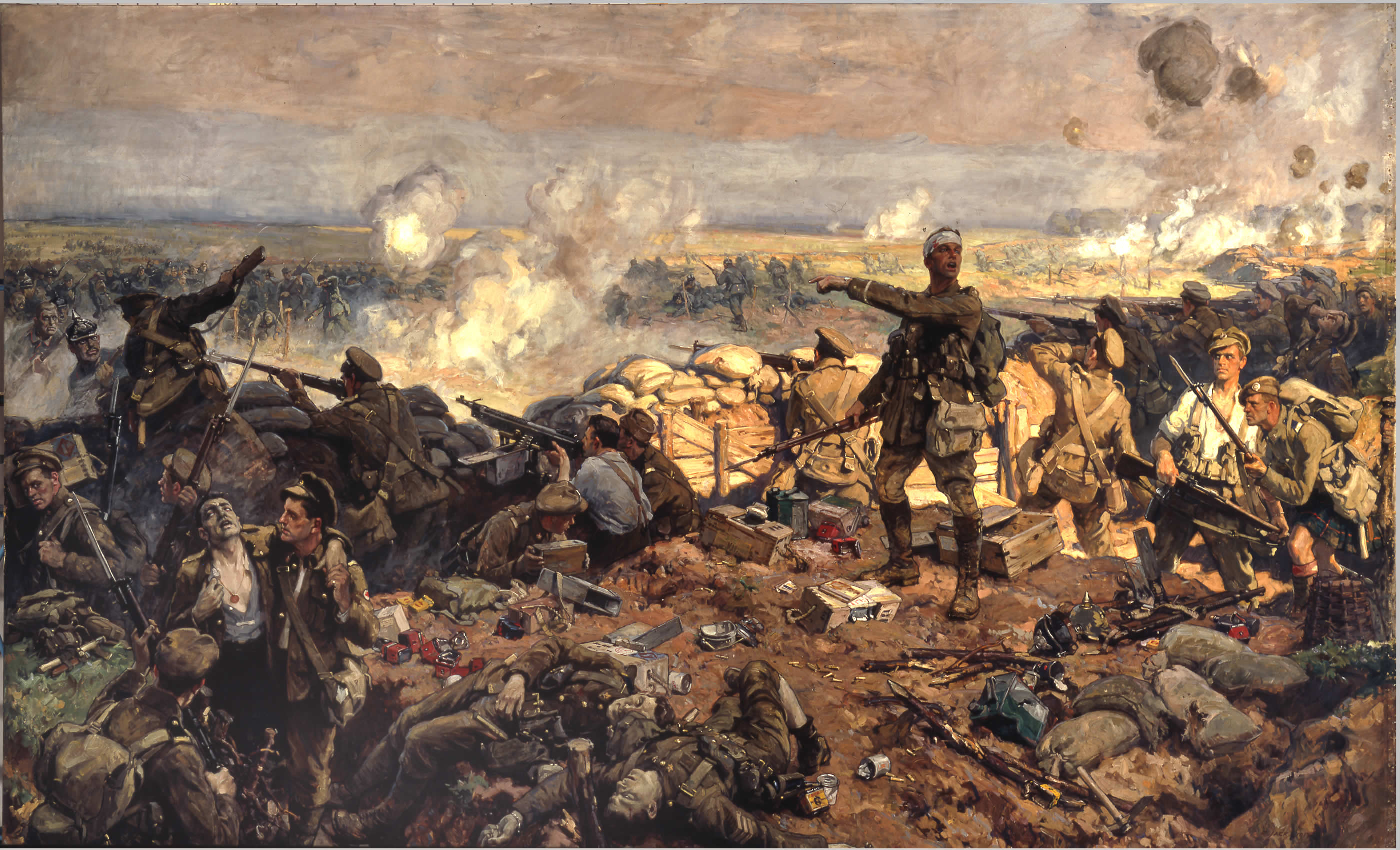
Ypres
The second battle of Ypres, 22 April-25 May 1915, was a rare German offensive on the Western Front during 1915.
It was launched with two aims in mind. The first was to distract attention from the movement of German troops to the eastern front in preparation for the campaign that would lead to the victory of Gorlice-Tarnow. The second was to assess the impact of poisoned gas on the western front. Gas had already been used on the eastern front, at Bolimov (3 January 1915), but the tear gas used there had frozen in the extreme cold.
Lethal gas
At Ypres the Germans used the first lethal gas of the war, chlorine. The gas was to be released from 6,000 cylinders and would rely on the wind to blow it over the allied trenches. This method of delivery controlled the timing of the attack – the prevailing winds on the western front came from the west, so the Germans had to wait for a suitable wind from the east to launch their attack.
The line around Ypres was held by French, Canadian and British troops. The French held the northern part of the line, with two divisions – the 87th Territorial and 45th Division, made up of Zouaves, the African Light Rifles and native Algerians. To their right was the Canadian division, and to their right were three divisions of British regulars (5th, 27th and 28th).
Canadian troops
The attack on 22 April hit the French lines worst. Not at all surprisingly the line broke under the impact of this deadly new weapon. The gas created a gap 8,000 yards long in the Allied lines north of Ypres. The success of their gas had surprised the Germans. They didn’t have the reserves to quickly exploit the unexpected breakthrough, and General Smith-Dorrien (Second Army) had enough time to plug the gap with newly arrived Canadian troops.
No proper counter measures were available to deal with the gas. However, the chlorine gas was water soluble, so one limited answer to the threat was to use water soaked clothes as an impromptu gas mask. With this limited protection the Canadians were able to fight off a second German gas attack on 24 April.
Faced with the threat from the gas, on 27 April Smith-Dorrien decided to pull back two miles, towards the edge of Ypres. Before he could implement this decision, he was replaced by General Herbert Plumer. On his arrival at Ypres Plumer came to exactly the same conclusions as Smith-Dorrien and ordered the same withdrawal on 1 May.
German attack
That day also saw a third determined German attack, against the southern flank of the Ypres salient. This attack was beaten off, partly by the 1st Battalion of the Dorset Regiment, who stood their ground despite suffering heavy casualties in the initial gas attack. German attacks continued until 25 May, but without achieving any more success. During the battle the British, French and Canadians suffered 60,000 casualties, the Germans only 35,000.
The gas attack at Ypres was one of the great missed chances of the First World War. If the Germans had backed it up with sufficient reserves then there was a real danger that they could have broken through the Allied lines. Instead the attack alerted the Allies to the dangers of poisoned gas, allowing them to put precautions in place. The use of poisoned gas became a standard feature of the fighting of the western front, but its best chance of forcing a breakthrough was gone.
Rickard, J (24 August 2007), Second battle of Ypres, 22 April-25 May 1915. historyofwar.org